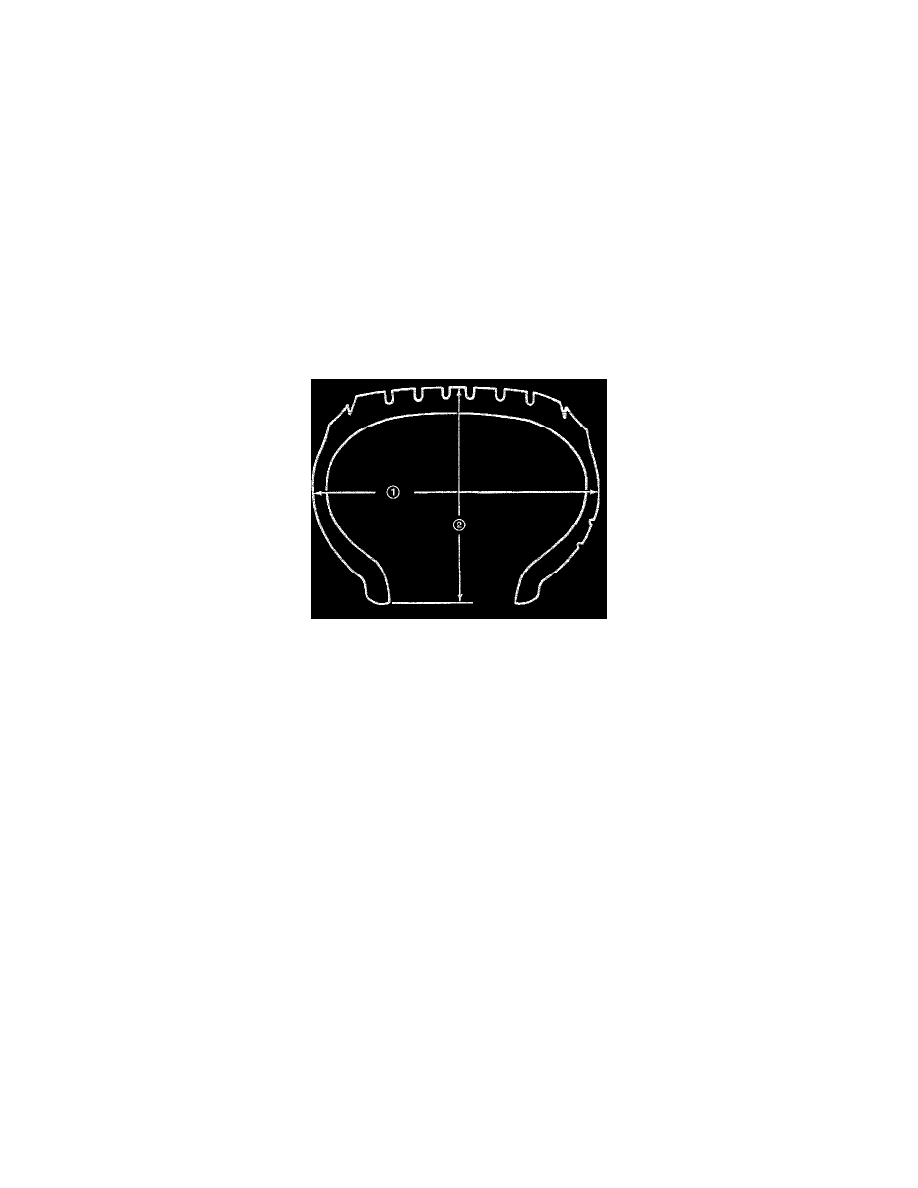Crossfire SRT-6 V6-3.2L SC VIN N (2005)

Tires: Description and Operation
DESCRIPTION
TIRES
Tires are designed and engineered for each specific vehicle. They provide the best overall performance for normal operation. The ride and handling
characteristics match the vehicle's requirements. With proper care they will give excellent reliability, traction, skid resistance, and tread life.
Driving habits have more effect on tire life than any other factor. Careful drivers will obtain in most cases, much greater mileage than severe use or
careless drivers. A few of the driving habits which will shorten the life of any tire are:
-
Rapid acceleration
-
Severe brake applications
-
High speed driving
-
Excessive speeds on turns
-
Striking curbs and other obstacles
Radial-ply tires are more prone to irregular tread wear. It is important to follow the tire rotation interval. This will help to achieve a greater tread life.
TIRE IDENTIFICATION
Tire type, size, aspect ratio and speed rating are encoded in the letters and numbers imprinted on the side wall of the tire.
In a metric sire size as P185/80R13. The first letter of the tire size tells if the tire is used for passenger (P), temporary (T), or commercial (C) use. The
second designation tells the section width (1) of the tire. The section width is the distance in millimeters from one side of the tire to the other when it is
inflated normally. The third designation tells the aspect ratio (2). The aspect ratio (2) is found by dividing the section height (2) by the section width
(1). The aspect ratio means the tire's height is 80% of the width. This is called the profile of the tire. Lower profile tires make the vehicle closer to the
road and reduce wind drag underneath the vehicle body. The next designation tells the construction type. R means radial tire, B means belted, and D
means diagonal (bias). The last designation gives the wheel rim in inches. The most common car rim sizes are 13, 14, 15. Some rims are as large as 20
inches in diameter.
Performance tires have a speed rating letter after the aspect ratio number. The speed rating is not always printed on the tire sidewall. These ratings are:
-
Q up to 100 mph
-
S up to 112 mph
-
T up to 118 mph
-
U up to 124 mph
-
H up to 130 mph
-
V up to 149 mph
-
Z more than 149 mph (consult the tire manufacturer for the specific speed rating)
An All Season type tire will have either M + S, M & S or M - S (indicating mud and snow traction) imprinted on the side wall.
RADIAL PLY TIRES
Radial-ply tires improve handling, tread life and ride quality, and decrease rolling resistance.
Radial-ply tires must always be used in sets of four. Under no circumstances should they be used on the front only. They may be mixed with temporary
spare tires when necessary.
Radial-ply tires have the same load-carrying capacity as other types of tires of the same size. They also use the same recommended inflation pressures.
The use of tires from different manufacture's on the same vehicle is NOT recommended. The proper tire pressure should be maintained on all four
tires.
